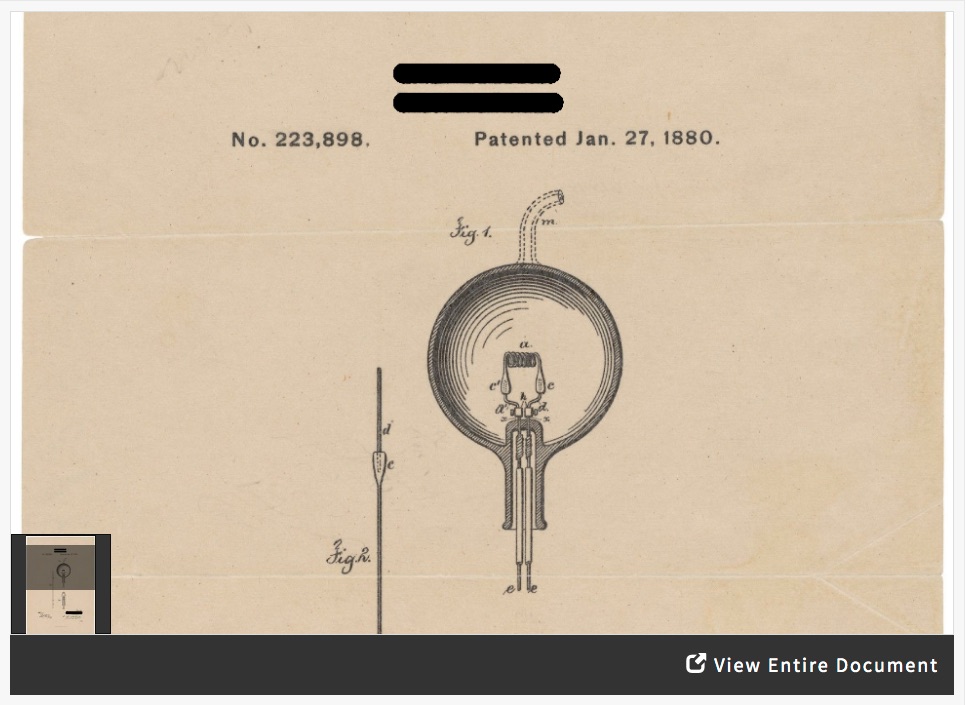In this activity, students will analyze Thomas Edison's patent drawing for an electric lamp, more commonly known as the light bulb.
Suggested Teaching Instructions
This activity can be used during a unit on the Industrial Revolution, inventions and innovations, and/or to build document analysis skills in younger students. For grades grades 3-6. Approximate time needed is 15-20 minutes.
Ask students to look at the partially obscured patent drawing. Without providing any context, model document analysis:
- Quickly scan this document. What do you notice first?
- Describe the document and the invention it depicts as if you were explaining it to someone who can’t see it.
- Based on what you can see, what do you think is the purpose of this invention? List evidence from the document to explain your opinion.
After some discussion, reveal that this is a patent drawing for an important invention. If students are unaware of the definition of a patent, provide a brief definition that a patent gives an inventor a temporary monopoly on his or her invention. Explain how in the United States, the Constitution gave Congress the power to "To promote the progress of science and useful arts by securing for limited times to authors and inventors the exclusive right to their respective writings and discoveries" in Article I, Section 8.
Ask students to offer educated guesses as to the specific invention. If no one guesses light bulb, provide the following clues from the inventor's description of the invention:
- "This invention consists...of carbon wire or sheets coiled or arranged in such a manner as to offer great resistance to the passage of the electric current..."
- "The invention further consists in placing such burner of great resistance in a nearly perfect vacuum."
Following a brief discussion and potential guesses, provide the following context for the invention. As you provide this information, ask if students can guess the invention.
The Patent Office granted the inventor a patent for this improvement to a previous invention. Because of his design changes and the materials he used—such as a carbon filament—his patent allowed for the invention to be reliable, safe, and practical. It paved the way for the universal domestic use of it.
The inventor and this invention propelled the United States out of the gaslight era and into the modern age. Out of his New Jersey laboratories, which were themselves inventions—thoroughly equipped and fully staffed—came 1,093 patented inventions and innovations that made him one of the most prolific inventors of all time.
In 1878 the creation of this practical invention had eluded scientists for decades. With dreams of transforming entire cites, the inventor lined up financial backing, assembled a group of brilliant scientists and technicians, and applied his genius to the challenge of creating an effective and affordable invention. With unflagging determination, he and his team tried out thousands of theories, convinced that every failure brought them one step closer to success.
On January 27, 1880, Thomas Edison received the historic patent embodying the principles of his incandescent light bulb that paved the way for the universal domestic use of electric light. The patent number for his electric lamp is 223,898.
After sharing the historical context, ask students to brainstorm how the light bulb has been used in other ways in history and today. How and why has the design changed since the 1880s?





